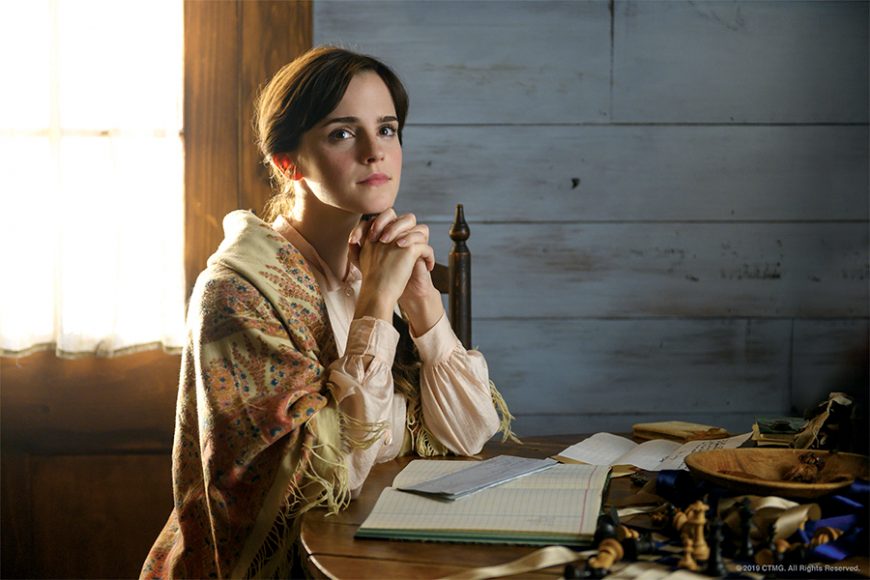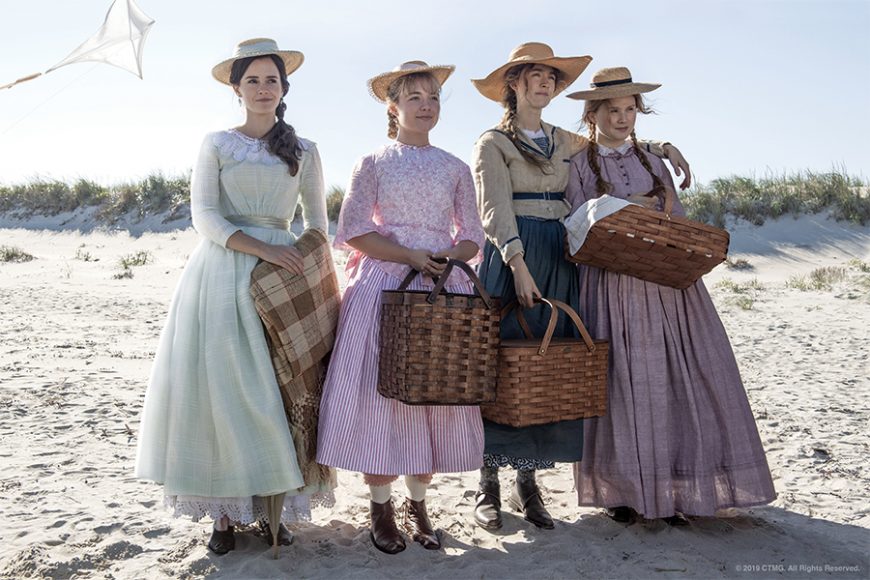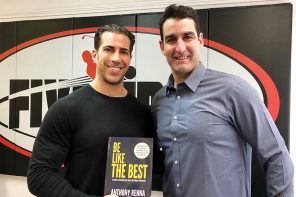Viewers of Greta Gerwig’s imaginative retelling of “Little Women” can be forgiven for thinking they’ve walked in on the middle or end of the film at its beginning.
Gerwig has restructured Louisa May Alcott’s tale of four sisters coming of age in Civil War New England so that the past becomes a counterpoint to the present and you ultimately understand that all adulthood is a reaction to childhood.
More than that, however, Gerwig has teased out the undercurrent of emotional and financial freedom that are very real themes in a story of poor girls who have little hope of attaining money unless they marry it — a fate that the writerly Jo, the most independent-minded of the March sisters, is determined to avoid.
Yet you have to think that she — particularly as conceived by Gerwig and embodied by the passionate Saoirse Ronan — would be disheartened to learn that the film has what Vanity Fair calls “a little man problem.”
While it has garnered wide acclaim, with a 95% rating on the aggregate movie website Rotten Tomatoes, it was shut out of the Screen Actors Guild Awards and earned only two Golden Globe nominations — for Ronan’s performance and Alexandre Desplat’s score. “Little Women” did much better with the Oscar nominations, earning nods for Best Picture, Best Actress (Ronan), Best Score, Best Supporting Actress (Florence Pugh), Best Adapted Screenplay (Gerwig) and Best Costume Design (Jacqueline Durran.) But neither Gerwig nor any other woman director received a Best Director nomination.
Nor is Gerwig’s film the only one by a woman director that has been ignored. Melissa Matsoukas’ “Queen & Slim,” about a Black Lives Matter moment, has been similarly overlooked. The press has taken note, putting awards committees on the defensive.
“We don’t vote by gender,” says Lorenzo Soria, president of the Hollywood Foreign Press Association, which awards the Globes. “We vote by film and accomplishment.”
Still, “Little Women” producer Amy Pascal tells Vanity Fair that screenings for awards voters have skewed female 2 to 1, which begs the question, Why? Why do these films lack a broader appeal that would include more male viewers? Is it a question of the male gaze trumping the female one, and what is meant by the male gaze and the female gaze anyway?
“The male gaze” is a term that feminist film theorist Laura Mulvey coined in 1975 to reflect the heterosexual male viewpoint that has been the default position in the visual and literary arts throughout cultural history, objectifying women, she said. “The female gaze” is the more complex contemporary response to it.
A gaze is about power, says Laura L. Vookles, chairwoman of the curatorial department at the Hudson River Museum in Yonkers. In the #MeToo era, “the female gaze is taking back that power,” she adds. “But it’s not only about one thing.” Indeed, while some women writers and visual artists have portrayed men or male bodies for delectation, in the way that male artists have portrayed women for centuries, they have often done so for reasons that go beyond objectification. The still hot genre of male-male romance — stories of gay men in love, written by women — allows its mostly female readership to explore relationships in a way that affords them a safe escape, adventure and even thrill.
Meanwhile, women artists have used the male body to plumb the sociopolitical issues of the day. In the recent “Go Figure: The Female Gaze” at Marymount Manhattan College’s Hewitt Gallery of Art, Alexandra Rubenstein’s butt clock paintings, featuring muscular male buttocks adorned with minute and second hands, played on both Playboy and women controlling their ticking biological clocks. The 11 women artists who were in that show are the heirs to painter Sylvia Sleigh, whose work in the 1970s amid a feminist wave placed male nudes in the positions of classic female nudes by male artists.
Yet Sleigh’s male nudes have a directness and a nonchalance that is lacking in the female nudes of male artists. They remain personal, individual, relatable. They’re rarely, if ever, about just a beautiful body — or even a beautiful body at all.
“Sylvia said that when it came to women portrayed as objects of desire, she didn’t have a problem with desire. She had a problem with objects,” Vookles says.
Is the female gaze, then, more well-rounded, more relationship-oriented? Or do we see it that way, because we view women traditionally as nicer and kinder than men, the so-called “fairer sex”?
“Women objectifying men has neither the power nor the menace of the male gaze,” Mallika Khanna writes on the Bitch Media site. That’s not only because women have for centuries lacked political and economic power but also because women can’t rape men whereas men can and do rape women.
Still, we cannot discount the perspective the individual spectator brings to the male or female gaze, with all the presuppositions about male and female behavior that implies. Vookles tells the story of Sleigh’s “Invitation to a Voyage” (1979-99), the artist’s 20-foot panoramic painting of herself, her husband, art critic Lawrence Alloway, and others picnicking and posing along the banks of the Hudson River with Bannerman’s Castle in the background.
Despite being an art historian, Vookles says she just assumed that Sleigh wanted to commemorate a gathering of friends she hosted in a riparian setting. Rather, however, the painter was seeking to reimagine Jean-Antoine Watteau’s 1717 oil painting “The Embarkation for Cythera” — a kind of bucolic party painting known as fête galante — from her own perspective. The origins of Sleigh’s work were not social but rather strictly business.
Complicating the male and female gaze further is contemporary society’s fluid approach to gender and sexuality. What if you consider yourself neither male nor female? What if you’re gay or bisexual? Vookles points to the work of the late Weston resident Paul Cadmus, a print of whose “The Fleet’s In” (1934) is part of the museum’s collection. The painting offers a view of rowdy sailors, its homosexual overtones so unmistakable that the picture was removed from view at the Corcoran Gallery in Washington, D.C. by assistant secretary of the Navy Henry L. Roosevelt. (He nonetheless kept it in his home until 1936.) The painting, now housed at Naval History and Heritage Command, was the making of the artist, whose sensitive male nudes, for which his lovers often posed, celebrate the sensuality as well as sensuousness of the male body.
Similarly, works in various media by Mickalene Thomas, an African-American lesbian, not only mimic great paintings in art history but portray black women as not-so-obscure objects of desire who are also powerful in their sexuality.
In the end, however, the artistic imagination may transcend any male or female gaze. Some of the most commanding and poignant portrayals of women today are contained in Lin-Manuel Miranda’s creation of the Schuyler sisters for his “Hamilton.” The self-possessed Angelica, the spirited Peggy and especially the forbearing Eliza — who marries Hamilton, forgives his betrayal of her and carries on his legacy — come alive not only in the performances but in the way Miranda has written them.
And you’ll be hard-pressed to find a more honest depiction of the desperate longing and terrible hope men feel in their pursuit of women than in Timothée Chalamet’s Laurie, the conflicted boy next door in “Little Women,” as written by Gerwig.
In “Hamilton” and “Little Women,” the artistic gaze casts an eye on all that is candid and compassionate.





